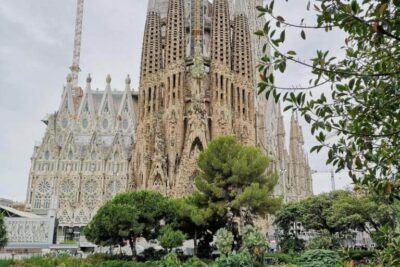
- The Architectural Significance of Sagrada Família: Gaudí's Vision
- Exploring the Symbolism Behind Sagrada Família's Design
- A Journey Through the History of Sagrada Família's Construction
- The Influence of Nature on Gaudí's Unfinished Masterpiece
- Understanding the Spiritual Meaning of Sagrada Família
- Visitor's Guide: Exploring the Wonders of Sagrada Família
The Sagrada Família, a basilica located in Barcelona, is one of the most iconic works of the renowned architect Antoni Gaudí. This extraordinary structure combines Gothic and Art Nouveau styles, captivating visitors with its intricate details and towering spires. Its construction began in 1882, and despite ongoing efforts, it remains unfinished, embodying the spirit of innovation and dedication that defines Gaudí's vision.
Known as Sagrada Família: Gaudí's Unfinished Masterpiece, this architectural marvel continues to draw millions of tourists each year, serving as a testament to both Gaudí's genius and the collaborative effort of generations of builders and artisans. As work progresses, the basilica's evolving design reflects a blend of tradition and modernity, making it a symbol of Barcelona's rich cultural heritage.
The Architectural Significance of Sagrada Família: Gaudí's Vision
The architectural significance of the Sagrada Família lies in Antoni Gaudí's groundbreaking approach to design and structure. His use of natural forms and organic shapes allows the basilica to blend harmoniously with its surroundings. Gaudí drew inspiration from nature, incorporating elements such as tree-like columns and intricate facades that mimic the natural world, which enhances the emotional experience of visitors. This connection to nature is a testament to his vision of architecture as a living, breathing entity.
Moreover, the Sagrada Família showcases Gaudí's innovative engineering techniques, which were revolutionary for his time. He employed a unique method of using hyperboloid structures and parabolic arches, which not only provide aesthetic beauty but also ensure stability and strength. This approach allows the unfinished basilica to withstand the test of time, making it a significant study for future architects and engineers.
The basilica's design is characterized by its symbolic elements, which reflect Christian themes and Gaudí's personal beliefs. Each façade tells a story, from the Nativity façade celebrating the birth of Christ to the Passion façade portraying his crucifixion. This narrative quality adds depth to the architectural experience, inviting visitors to engage with the spiritual messages embedded within the structure. The ongoing construction of "la Sagrada Família unfinished" continues to enhance this narrative, inviting new interpretations as it evolves.
In summary, Gaudí’s vision for the Sagrada Família is not only a celebration of artistic creativity but also a profound exploration of architectural principles. Its significance can be summarized as follows:
- Integration with Nature: Use of organic designs that reflect the natural environment.
- Innovative Engineering: Introduction of new structural techniques for enhanced stability.
- Symbolic Storytelling: Each element conveys a deeper spiritual message.
- Cultural Impact: Represents Barcelona’s heritage and continues to inspire future generations.
Exploring the Symbolism Behind Sagrada Família's Design
The design of the Sagrada Família is rich in symbolism, reflecting Gaudí's deep religious faith and his desire to convey Christian narratives through architecture. Each façade serves a distinct purpose, encapsulating different aspects of the life of Christ. The Nativity façade, for example, is adorned with intricate carvings that celebrate the birth and early life of Jesus, inviting visitors to ponder the significance of these events.
Furthermore, the use of nature-inspired forms in the Sagrada Família's design symbolizes the connection between the divine and the natural world. Gaudí believed that true beauty could be found in nature, and this belief is manifested in the basilica's columns that resemble trees and the overall organic shapes of the structure. This integration of natural elements allows for a profound spiritual experience as visitors engage with the space.
Each detail within the Sagrada Família, from the stained glass windows to the sculptural elements, carries a deeper meaning. The Passion façade portrays the suffering of Christ, employing stark and dramatic designs to evoke emotion. The ongoing construction of "la Sagrada Família unfinished" adds to the narrative, as new interpretations and artistic elements emerge, continually enriching the story that the basilica tells.
In summary, the Sagrada Família is not merely an architectural feat; it is a canvas of spiritual expression. Gaudí's unique approach to symbolism ensures that every visitor can find personal meaning within its walls. The basilica’s design can be viewed through the following lenses:
- Religious Narratives: Each façade tells a story of Christian significance.
- Connection to Nature: Natural forms symbolize the interplay between divinity and the environment.
- Emotional Depth: Architectural details evoke powerful feelings related to faith.
- Evolving Interpretation: Ongoing construction invites fresh perspectives on its symbolism.
A Journey Through the History of Sagrada Família's Construction
The construction of the Sagrada Família began in 1882, catalyzed by the vision of architect Antoni Gaudí. Initially designed in a Neo-Gothic style, Gaudí took over the project a year later, transforming it into a revolutionary fusion of Gothic and Art Nouveau. Over the decades, the basilica has evolved significantly, with each construction phase reflecting Gaudí's unwavering commitment to his artistic ideals, ultimately leading to the status of "la Sagrada Família unfinished."
Throughout its history, various challenges have shaped the progression of the Sagrada Família's construction. Key milestones include:
- 1882: Groundbreaking ceremony; original plans by Francisco de Paula del Villar.
- 1883: Gaudí takes over, shifting the architectural direction.
- 1936: Spanish Civil War halts construction, leading to the loss of many original plans.
- 2010: Completion of the Nativity façade, showcasing Gaudí's intricate designs.
As of today, construction continues under the guidance of the Sagrada Família Foundation, which aims to honor Gaudí's vision while adapting to modern techniques. The use of advanced technologies, such as 3D printing and computer modeling, has allowed for a more precise realization of Gaudí's original ideas, bridging the gap between the past and present in the construction of "la Sagrada Família unfinished."
The journey of the Sagrada Família reflects a broader narrative of perseverance and innovation in architecture. With each passing year, this masterpiece draws closer to its completion, heralding a future where Gaudí's dream will finally be realized. The ongoing efforts not only enhance the basilica's structure but also enrich its story and significance within Barcelona's cultural landscape.
The Influence of Nature on Gaudí's Unfinished Masterpiece
The influence of nature on Gaudí's unfinished masterpiece, the Sagrada Família, is profound and multifaceted. Gaudí believed that architecture should mimic the organic forms found in nature, which is evident in the basilica's design. The columns, reminiscent of tree trunks, branch out to support the ceiling, creating an awe-inspiring forest-like interior. This organic approach not only enhances the aesthetic experience but also fosters a sense of tranquility, inviting visitors to connect with the natural world.
Additionally, Gaudí's inspiration from nature extends to the intricate facades of the Sagrada Família. Elements such as floral motifs, animal figures, and geological formations are thoughtfully integrated into the design. These features serve to remind us of the beauty and complexity of the natural environment, reinforcing the idea that the unfinished basilica is a continuation of the landscape itself. The incorporation of these elements also emphasizes Gaudí's belief that architecture should evoke emotions similar to those experienced in nature.
Moreover, the ongoing construction of "la Sagrada Família unfinished" allows for the introduction of new natural forms and designs inspired by advancements in technology. As techniques evolve, the builders continue to draw on Gaudí’s original vision, ensuring that each addition harmonizes with the existing structure. This dynamic relationship between nature and architecture creates a living entity that reflects the changing environment and the passage of time, further enriching the narrative of the basilica.
In summary, the Sagrada Família serves as a testament to Gaudí's unique ability to intertwine architecture with the natural world. His visionary approach results in a masterpiece that not only stands as a symbol of religious devotion but also celebrates the intricate beauty of nature. Through elements such as:
- Organic Designs: Columns resembling trees and natural forms.
- Nature-Inspired Facades: Incorporation of flora and fauna motifs.
- Dynamic Evolution: Continuous adaptation of new techniques inspired by nature.
the unfinished basilica embodies a harmonious dialogue between the man-made and the natural, inviting all who visit to experience this extraordinary connection.
Understanding the Spiritual Meaning of Sagrada Família
The Sagrada Família is a profound expression of spirituality, engaging visitors on multiple levels through its intricate design and symbolism. At its core, the basilica serves as a tribute to the Christian faith, with each architectural feature reflecting deep religious significance. The ongoing construction of "la Sagrada Família unfinished" emphasizes that this spiritual journey is not confined to a single moment but is an evolving narrative that invites personal interpretation and connection with the divine.
Moreover, Gaudí's intention to create a space that fosters contemplation is evident in the layout and design elements of the Sagrada Família. The interplay of light and shadow, particularly through the stunning stained glass windows, transforms the interior into a sanctuary where spiritual reflection can flourish. As visitors move through the space, they are invited to experience a sense of transcendence, reinforcing the basilica's role as a place of worship and pilgrimage.
In addition to its architectural beauty, the Sagrada Família incorporates **natural symbolism** that deepens its spiritual meaning. Elements such as tree-like columns and organic shapes not only evoke the beauty of creation but also signify life and growth in a spiritual context. This connection between nature and faith underlines Gaudí's belief that architecture should resonate with the world around it, inviting visitors to appreciate the divine in both the structure and the natural environment.
Ultimately, the ongoing construction of "la Sagrada Família unfinished" serves as a reminder of the journey of faith itself—one that is never fully complete. As the basilica evolves, it continues to inspire a sense of hope and renewal among all who encounter it. Through its architectural grandeur and rich symbolism, the Sagrada Família stands as a testament to the enduring human quest for spiritual understanding and connection with the sacred.
Visitor's Guide: Exploring the Wonders of Sagrada Família
As you embark on your journey to explore the Sagrada Família, plan your visit thoughtfully. The basilica offers a variety of options for accessing its breathtaking architecture and rich history. Consider purchasing tickets in advance to avoid long lines and ensure a seamless experience. Guided tours are also available, providing insights into the ongoing construction of "la Sagrada Família unfinished" and the intricate details that make this masterpiece so unique.
Upon entering the Sagrada Família, you will be greeted by stunning stained glass windows that illuminate the interior with a kaleidoscope of colors. To enhance your visit, keep an eye out for key architectural features, such as:
- The Nativity Façade: An exuberant celebration of life and creation.
- The Passion Façade: A stark portrayal of Christ's suffering.
- Tree-like Columns: Columns that rise to form a forest-like canopy.
For a richer experience, take the time to appreciate the various chapels within the basilica, each offering its own unique ambiance and spiritual significance. The ongoing work on "la Sagrada Família unfinished" allows visitors to witness the evolution of Gaudí's vision firsthand, making each visit a new exploration of this architectural gem.
Additionally, consider visiting during different times of the day to experience the changing light within the basilica. Early morning or late afternoon visits provide a serene atmosphere, allowing for a deeper connection with the artistic and spiritual essence of the Sagrada Família. This evolving experience reflects the continual journey of the basilica itself, ever closer to completion yet always inviting reflection and wonder.
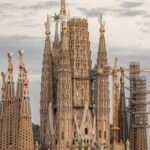 The Sagrada Familia in Barcelona: When Will it Be Finished?
The Sagrada Familia in Barcelona: When Will it Be Finished?If you want to know other articles similar to Sagrada Família: Gaudí's Unfinished Masterpiece you can visit the category Sagrada Familia.
Deja una respuesta

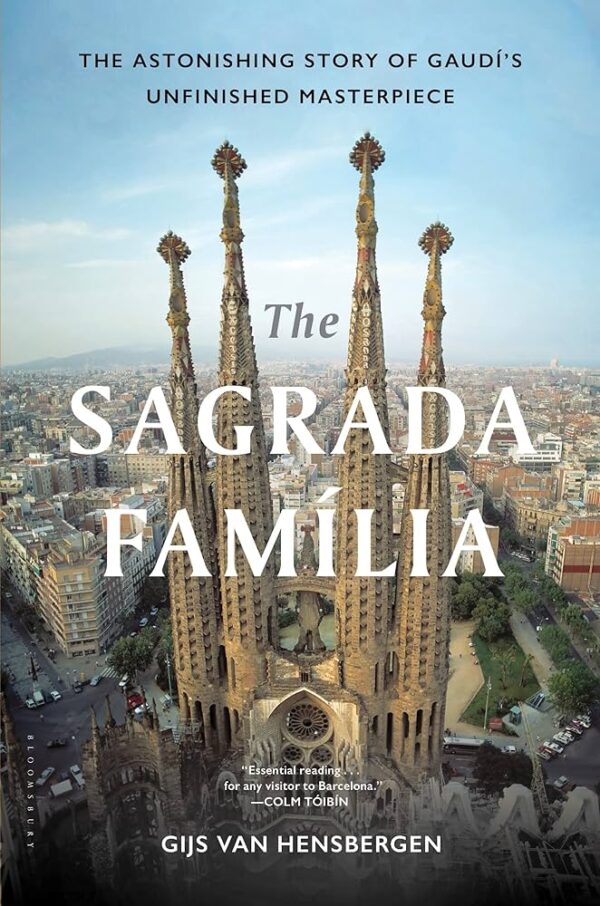
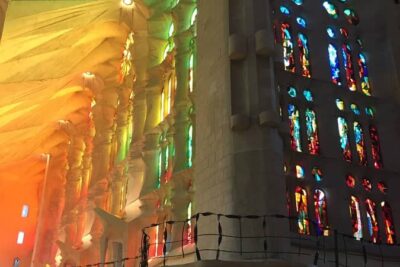



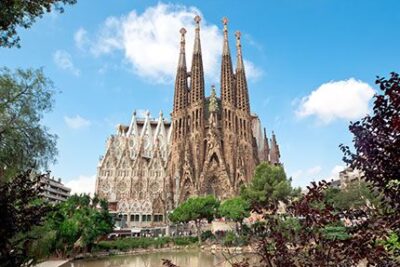
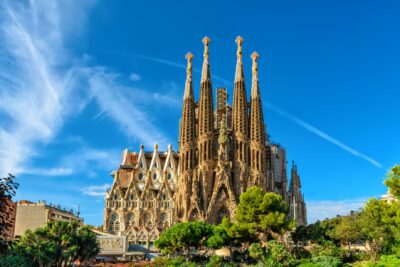
Read more!